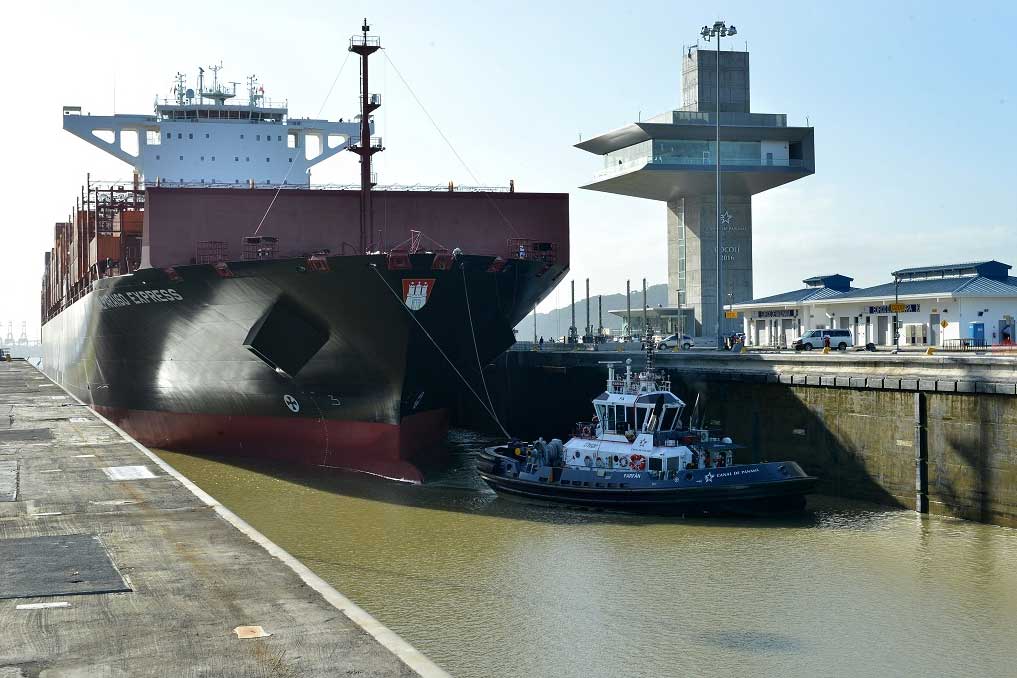Six months after the inauguration of the e[ds_preview]xpanded Panama Canal, the first vessel with 10,500 TEU capacity transits the waterway.
Hapag-Lloyd‘s Neopanamax newbuilding »Valparaiso Express« with 10,589 TEU capacity recently passed the expanded locks, the Panama Canal Authority (ACP) reported. The new locks, which are 70 feet wider and 18 feet deeper than those in the original Canal, are even able to accommodate Neopanamax vessels carrying up to 13,000 to 14,000 TEUS.
The vessel began its transit at the Pacific-facing Cocoli Locks, following calls at ports in Chile, Peru, Ecuador and Colombia. After completing its transit through the Atlantic-facing Agua Clara Locks, the ship was planned to stop at Manzanillo International Terminal in Panama and to continue its route to terminals in the Dominican Republic, United Kingdom, Germany, Belgium, France and the Netherlands.
According to the ACP, the »Valparaíso Express« is part of Hapag-Lloyd‘s Europe – South America West Coast service, which covers a nine-week rotation, merging two previous services between Northern Europe and the West Coast of South America. It measures 333 meters in length and 48 meters in width, and is the first of five new vessels in Hapag Lloyd‘s new 10,500 TEU class which are specifically being built to take advantage of the additional capacity the Expanded Canal affords.
The announcement came only a few days after a report, that the waterway had welcomed its 500th transit of a Neopanamax ship: Yang Ming‘s »YM Unity«. Built in 2006, it measures 335.7 meters in length and 42.8 meters in beam and has a carrying capacity of 8,200 TEUs.
»The transit marks a significant milestone for the Expanded Canal, which is experiencing a steady flow of traffic—including containerships, liquid petroleum gas (LPG) vessels, dry bulk carriers, vehicle carriers, crude product tankers and liquefied natural gas (LNG) vessels, which is a new market segment for the Canal«, the ACP said. Jorge L. Quijano, Administrator of the authority added »We’re increasingly optimistic from what we’ve seen with these traffic patterns«, as well because of the growing port and transshipment options available.
»Looking forward, we’re taking steps to enhance Panama’s shipping infrastructure so that we can provide an even more holistic set of offerings to shippers and their cargo, and further strengthen the country’s position as the logistics hub of the Americas,« he said.
















